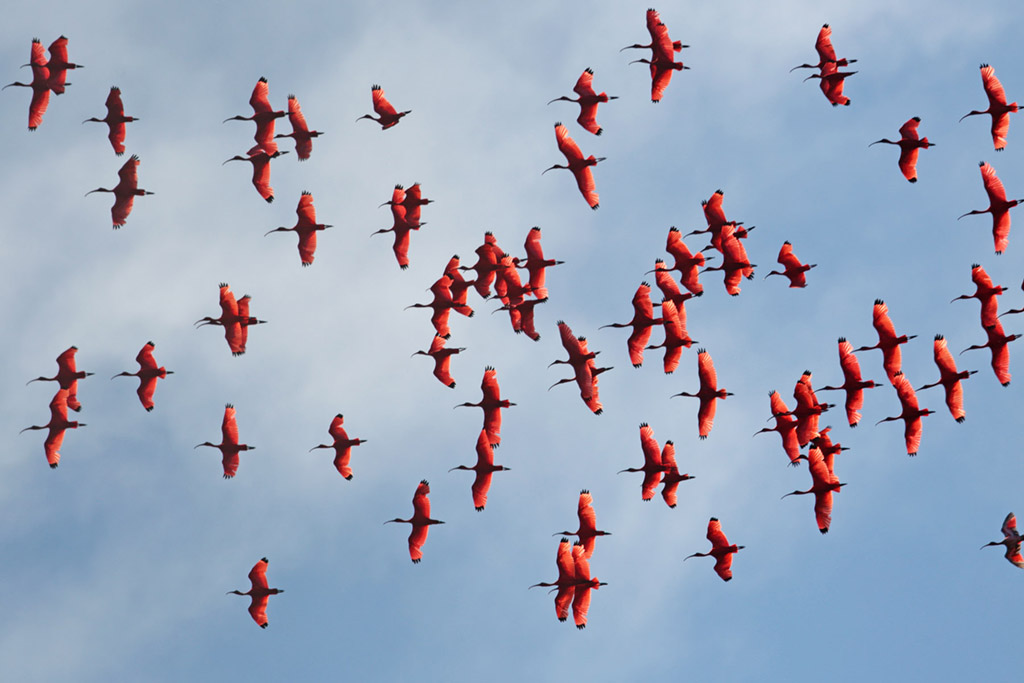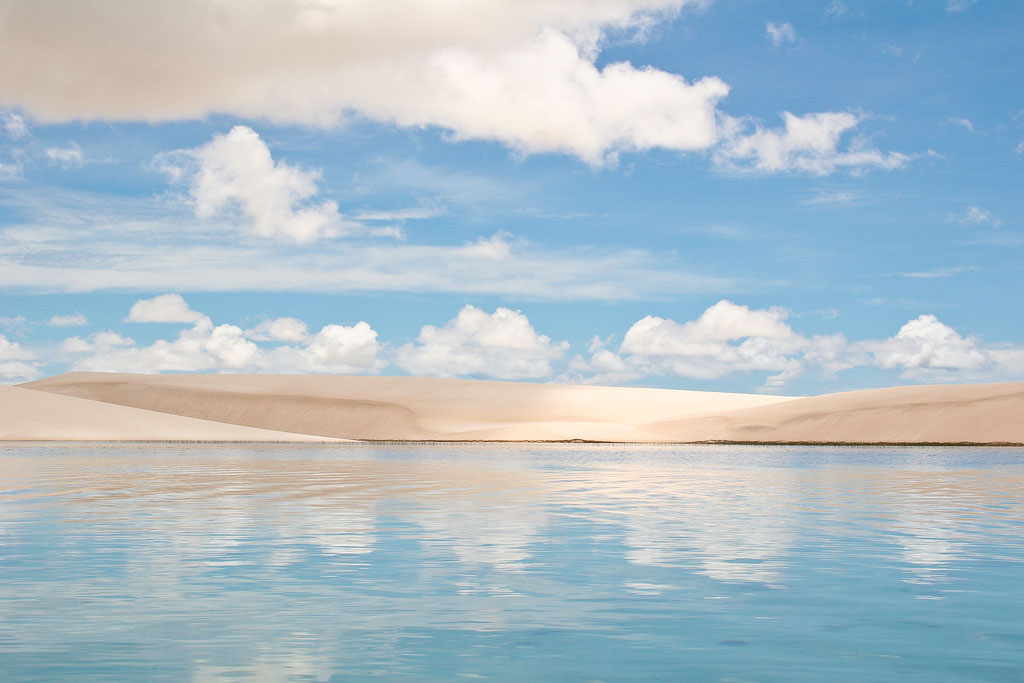MARVELOUS MIXED-UP LANDSCAPE

LENÇÓIS MARANHENSES NATIONAL PARK
Imagine swimming in a desert riddled with thousands of lagoons! This sounds like a fantasy land or an alien planet but this magnificent mix-up is a real place -- one of the most unique landscapes on Earth.
Lençóis Maranhenses National Park (Parque Nacional dos Lençóis Maranhenses), located in the Maranhão state, in northeastern Brazil, near the equator. It is a protected swath of land comprised mainly of coastal dune fields, formed by dramatic high ripples of pristine white sand. The dunes look like graceful folds of fabric. Their name, Lençóis Maranhenses, means “bedsheets of Maranhão,” in Portuguese.
Six months a year, during the rainy season, it is dimpled with pools of clear blue green freshwater. This rare and beautiful landscape and its fascinating surrounds beckon us to tour.
The park runs along 70 km (43 mi) of Atlantic coastline, spanning 383,000 acres (155,000 ha), just east of the Baía de São José.

The surreal landscape was formed during the late Quaternary period, the current and most recent period of the Cenozoic Era, which includes the past 0.5–1.0 million years. Over time, masses of sugar-like sand were carried by the Parnaiba and Preguiças rivers from the interior regions of the country and deposited along the coast, where heavy equatorial Atlantic winds, during the dry season months, October and November, have driven it back as far as 30 miles inland. The result is a spectacular wild pattern of rolling dunes.

It may look like a desert, but it’s not. Deserts receive less than 10 inches of rain annually, but Lençóis receives about 47 inches (1,200 mm) of rain per year, mostly between the months of January and May.

The sculpted dunes rise up as high as 130 feet (40 m) tall. The depressions between them become vessels for rainwater, held by a layer of impermeable rock located beneath the sandy surface. At their fullest, at the peak of the rainy season, the largest of these freshwater lagoons is 300 feet (91 m) in length and 10 feet (3.0 m) in depth. Swimming is a surreal experience, with bath water temperatures between 27.5 °C (81.5 °F) and 32 °C (90 °F).

The lagoons are often interconnected with one another as well as with the rivers, which allow fish and other aquatic life to migrate in as the rains fill in. When the dry season returns, the fish depart as the lagoons quickly evaporate. Some insect and fish species, such as the wolffish, remain in place by burrowing down into wet layers of mud during the dry season, only to reemerge when the rains return.

At the center of the park, you will find 2 oases, or “restingas.” Queimada do Britos, spans 1,100 hectares (2,700 acres), and Baixa Grande spans 850 hectares (2,100 acres).

The park is home to a range of wildlife, including 133 species of plants, 112 species of birds, and at least 42 species of reptiles. Four species are listed as endangered, including the scarlet ibis (eudocimus ruber) , the neotropical otter (lontra longicaudis), the oncilla(leopardus tigrinus) and the West Indian manatee (Trichechus manatus), which live in the restinga and mangrove ecosystems.

You can see the drama of this place featured in two films: The House of Sand and film Avengers: Infinity War, where it depicted the planet Vormir. Or, better yet, go see it for yourself! Fly into the regional capital of São Luís, then travel by jeep to the interior of the park from Barreirinhas.

A visit to Lençóis Maranhenses is a beautiful adventure. Beyond walking the dunes and swimming in the lagoons, there are areas where you can surf, canoe, and camp. You can ground in an all-terrain vehicle and take fascinating water tours.

The best time to visit the lagoons is between July and September when they are at their peak levels and temperatures are relatively comfortable. You’ll want to hire a guide, since it’s easy to get lost in this vast unmarked landscape.

Read more about Magnificent Mix all this week on BeautifulNow. And check out more beautiful things happening now in BN Wellness, Impact, Nature/Science, Food, Arts/Design, and Travel, Daily Fix posts.

Want more stories like this? Sign up for our weekly BN Newsletter, Like us on Facebook. Follow us on Twitter, Instagram, Pinterest. Join our BeautifulNow Community and connect with the most beautiful things happening in the world right now!
Do you have amazing photos? Enter them in this week’s BN Photo Competition.

